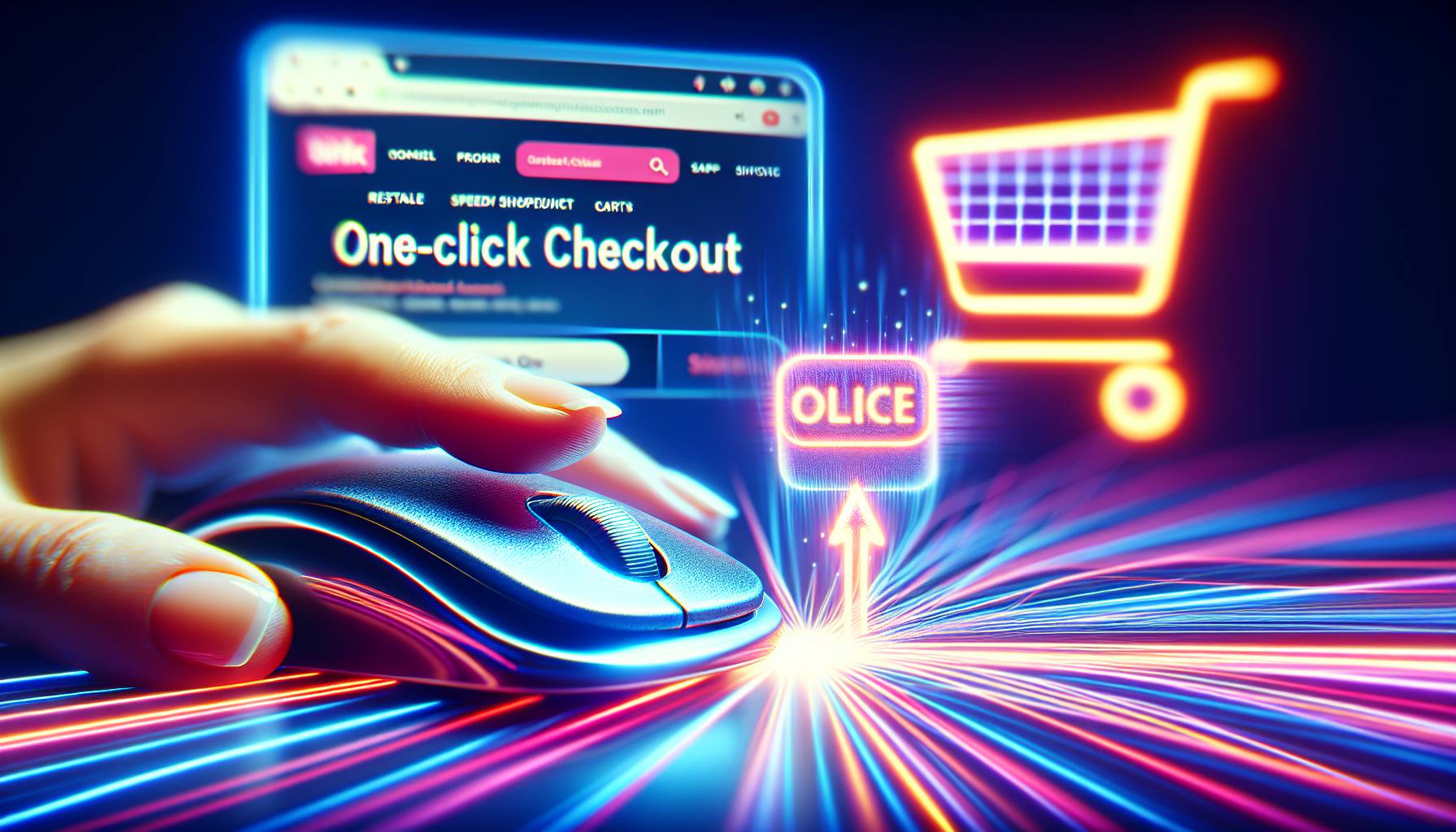Understanding the Importance of Seamless Payment Flow

I think most people reckon they know what seamless payment flow is. They believe it’s just about having a website that loads quickly, looks good and doesn’t bug out. Sort of.
But as someone who has spent a lot of time on fashion websites, I can tell you there’s more to it than that. It seems like even if your website is perfect in every other way, customers are very likely to drop off at the checkout stage if they find making payments to be complicated. It seems like imagine spending all that time and effort making sure your customers’ journey through your website was beautiful only for it to come to a screeching halt because the process is overwhelming at the last step.
And in today’s world where people use their phones for everything, more and more shoppers will choose convenience over an aesthetically pleasing experience. A simple way to solve this would be to offer as many payment options as possible but then you run the risk of making things too complicated again. This is nearly always not to say that giving customers enough choices isn’t important but things need to be balanced well enough so there are no trade offs on either front. Customers should not get stuck between a lack of choices or overwhelming ones.
That is why seamless payment flow is such an important part of a business’ customer experience strategy. It’s about reducing friction so much that your customer doesn’t even notice how much work went into creating this path for them - which means it was done right. If you can make sure that this part of their shopping journey is fairly so smooth they don’t even notice it, then you’ve managed to do something most people don’t manage - ensure loyalty by taking a load off their backs without asking them for anything in return.
Strategy 1: Simplifying the User Interface

A mistake I keep seeing is almost never businesses trying to do too much with their checkout interface. It seems like they're trying to pack in every possible feature, field, and element without realising that this actually makes it harder for a user to buy the product. The result is an overloaded checkout page, which leads to slower decision-making by the user.
Sometimes they even abandon their cart because it all just got a little too complicated. So what does simplification of the checkout flow really mean. It's about minimising the number of steps needed by the user, as well as the number of fields they need to fill out.
In some situations it even means doing away with long confirmation emails and asking users to enter payment details at the point of purchase itself. Where things get tricky is when you're trying to balance transparency and clarity with security concerns. But here's where design comes in.
By rearranging elements on the screen so a user can comparatively follow a logical path from login (if needed) to order confirmation, you can drive more conversions. Breaking up steps into smaller sections is another great way to go about this, but it's important that the steps have clear instructions and users know exactly what's required of them before they move on. Sort of.
In my experience, reducing visual clutter has been incredibly impactful. I've found that customers want to be able to see the product they're purchasing as they're checking out. They also want concise data fields that aren't too overwhelming and relatively few pop-ups or additional windows during this process.
Strategy 2: Offering Multiple Payment Options

Implies That some store owners still seem to think having just a credit card gateway is enough. There's this whole idea that if you've got Visa, Mastercard and Paypal, you've ticked all the boxes. I sort of get it - those were the main ways people paid online for years. More or less.
It worked because no one really knew any better. But things have changed. Even in Australia, we're increasingly seeing Buy Now Pay Later services like Afterpay and ZipPay. The thing is, I realised that everyone shops differently.
Some people are impulse buyers and need more flexible payment options. More or less. Others don't trust new payment gateways so they stick to tried-and-tested methods.
If you don't cater to both - you lose out on half your customers. It seems simple enough but can get quite confusing sometimes. Every payment processor has different rates and requirements. If you want to offer international payments and accept more currencies, it's even more complex.
But having multiple payment gateways isn't just about conversions, it's about building trust with your customers. People want to shop securely and efficiently today. They want to know their money is protected and that payments will go through smoothly.
If you only have one gateway, it could lead to issues for buyers who want something else or already have an account with a different provider. It often results in more abandoned carts as well - which no one wants on their store statistics.
Strategy 3: Implementing One-Click Checkout

A lot of people reckon one-click checkout is rarely a magic button, and their job is done. Add a little bit of information, and customers are ready to go. That's not how it works. One-click checkout is a layered affair where you take your time to make things as simple as possible for your customers.
In my experience, it's not enough for one-click checkout to exist on your website. You've got to let people know they're welcome to use it if they feel like it. You also need to make it the obvious choice.
When you look at successful e-commerce websites, their payment flow always keeps the customer at the centre and then, builds a checkout process around them. Most of us want to be able to choose whether or not we save our payment information on a site we're going back to more than once. The option should exist but never be forced on us - especially if we've only visited a website once before.
I think there needs to be more awareness that one-click checkouts aren't supposed to be forced upon customers - they're just meant to offer up convenience. This isn't all so cut-and-dry either because there's quite a bit of complexity in picking out the right one-click checkout options too. You need your payment options for all your customers and alternatives for those who might not feel comfortable adding their card details at that moment in time.
And then you need an experienced tech expert who knows what they're doing setting up these systems - you'd hate for things to go wrong just when you've almost made a sale.
Strategy 4: Enhancing Security Measures

The problem with what a lot of businesses think security means is that it is the least favourite word in the book. They think people don’t like their security being put at the centre of the transaction and so they brush it off. But let’s just say, with the number of payment methods available to us today, we want our money to go to who we intend it for and not some fraudster who is going to book themselves a holiday to Bali at our cost.
I suppose a nuanced approach makes sense given how people are not all black and white. Security is slightly a priority but so is having fun when shopping or making payments online. Sometimes, too many permissions and checks can suck the joy out of an experience. For example, maybe you’re on vacation in another country and are trying to buy something online from your home country.
Your bank will raise an alert for this as it seems suspicious because you’re using your payment method from another country - perhaps one with more relaxed security measures - but imagine being denied repeatedly because your bank just keeps seeing you as high risk. Frustrating. And this is slightly why a seamless checkout experience that still has enhanced security measures should have elements like self-identification for customers who know where they are shopping from.
Security checks should never feel like big brother watching your every move but more like a silent bodyguard following you around on your shopping journey. It’s about striking that right balance without tilting too far one way or another - I think that’s what most people get wrong. And yes, it can feel challenging and uncertain because most times when companies want to build credibility or trust through security measures, they end up losing business.
Or maybe not… the rise in payment apps tells me perhaps the world does want their hard earned cash protected at all costs - even if that cost is sort of sometimes annoyedly putting in an OTP or two after adding things to cart.
Strategy 5: Utilizing Mobile Optimization Techniques

Let’s be honest. The way I see it, people will tell you that making your payment page “mobile-friendly” is enough. Comes Across As that if it looks good on a little screen, people will buy. But the reality is quite different, and they soon realise that most users find mobile checkouts a hassle.
You see, most websites are designed for desktop users first. And even when mobile checkout options are included, the small screens make it hard for shoppers to fill in long forms or type out details. Combine this with slow load times and you have many potential customers abandoning their shopping carts - which can cost you more than a few sales.
It’s sort of strange to think about how even now, so many businesses fail to properly account for the increasing number of smartphone users who do most (if not all) of their shopping on their phones or tablets. Even with so many websites claiming to have a responsive design, many still look outdated and clunky on smaller devices - because no one can truly tell what makes a website “look good”. The answer lies in being able to balance accessibility with a stylish interface - but even then, some people aren’t happy. The best way to make your mobile payments easier is by keeping your layout simple and navigation clear.
It should be easy for customers to fill out payment forms without having to go through multiple steps or guess where something is hidden. And adding options such as Apple Pay or Google Pay can help them pay quickly without having to enter their card details (which they probably don’t remember anyway).


